Portacath: What is it, why is it used, and more - Medical News Today. A portacath is a small device that allows people to receive frequent IV treatments or blood draws without needles. It is under the skin on the chest and has a silicone port and a plastic catheter. Learn about its appearance, purpose, benefits, types, procedure, care, flushing, pillows, removal and risks. portocath. Port-A-Cath 101: How To Access The Port - Nurse.org. A port-a-cath is an implanted device that allows easy access to a patients veins for intravenous therapy. Learn how to access a port, what is the indication, what are the types, and what are the steps to follow. Watch a YouTube video and get free study guides from Nurse.org. portocath. Port (medical) - Wikipedia portocath. Port (medical) Portal system. It is installed under the skin, with the tube connected to a vein portocath. External access is with a needle through the yellow membrane. Port-a-Cath with needle assembly inserted portocath. In medicine, a port is a small medical appliance that is installed beneath the skin. A catheter (plastic tube) connects the port to a vein.. Implanted Port: What Is It, Procedure & Management - Cleveland Clinic. What are the types of implanted ports? Types of implanted ports include: Single lumen: This port has one access point (septum) portocath. It is the most common type. Double lumen: This triangular-shaped port has two access points to a vein. Two ports are helpful if you need to get more than one medication at the same time. portocath
Portocath
academia milionarilor
. Portacaths | Cancer in general | Cancer Research UK. A portacath is a small chamber or reservoir that sits under your skin at the end of your central line. The other end of the line sits in a large vein close to your heart. You can feel the chamber of the portacath, but unless youre very thin you cant usually see it. When you need treatment, your chemotherapy nurse puts a needle into the .. About Your Implanted Port - Memorial Sloan Kettering Cancer Center portocath. The port is the starting point for fluids to flow through the catheter portocath. It sits under your skin and has a raised center called a septum

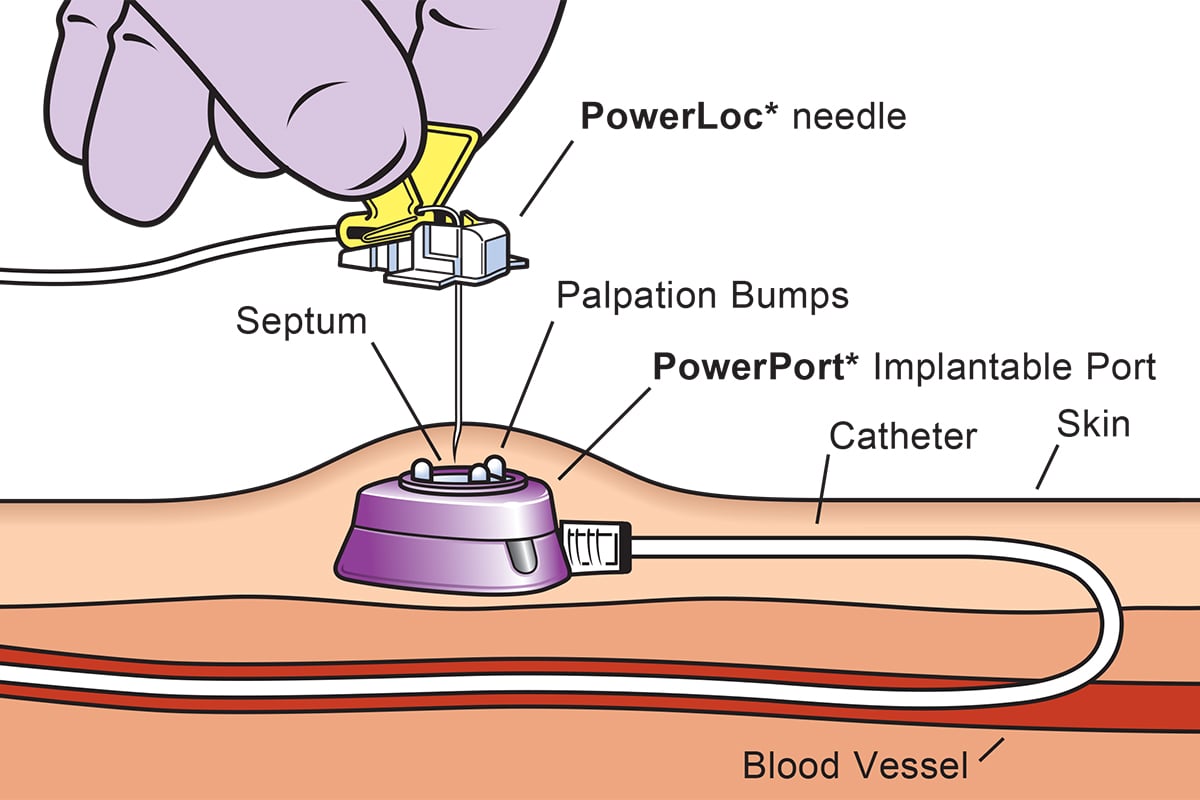
jj lin if only lyrics
. Then, your nurse cleans the skin and puts a needle into the port.. Vascular Access Devices: PICCs and Ports - Cystic Fibrosis Foundation portocath. Who Needs Vascular Access Devices? Vascular access devices may help people with cystic fibrosis who need intravenous (IV) antibiotic treatments for more than just a few days, such as during an exacerbation. After a few days, regular IVs can become infected, irritate the small veins, or fall out of .. Central venous access: Device and site selection in adults portocath. INTRODUCTION — Secure and reliable venous access is a cornerstone in the care of hospitalized adult patients, as well as for a variety of outpatient situations. Central venous access (ie, insertion of a vascular catheter such that the tip terminates in a deep vein of the neck, chest, or abdomen) is a key component of this practice.. Guidelines for the Management of Intravascular Catheter-Related .. Epidemiology and Pathogenesis. Each year in the United States, hospitals and clinics purchase >150 million intravascular devices for the administration of iv fluids, medications, blood products, and parenteral nutrition fluids; to monitor hemodynamic status; and to provide hemodialysis [].The majority of these devices are peripheral venous catheters, but >5 million CVCs are inserted each year.. Intravenous (IV) Lines, Catheters, and Ports Used in Cancer Treatment. Implanted ports (also called a port, Mediport, or port-a-cath) Ports are placed under the skin. They are usually placed in the upper chest but can sometimes go in the arm or abdomen (belly) portocath
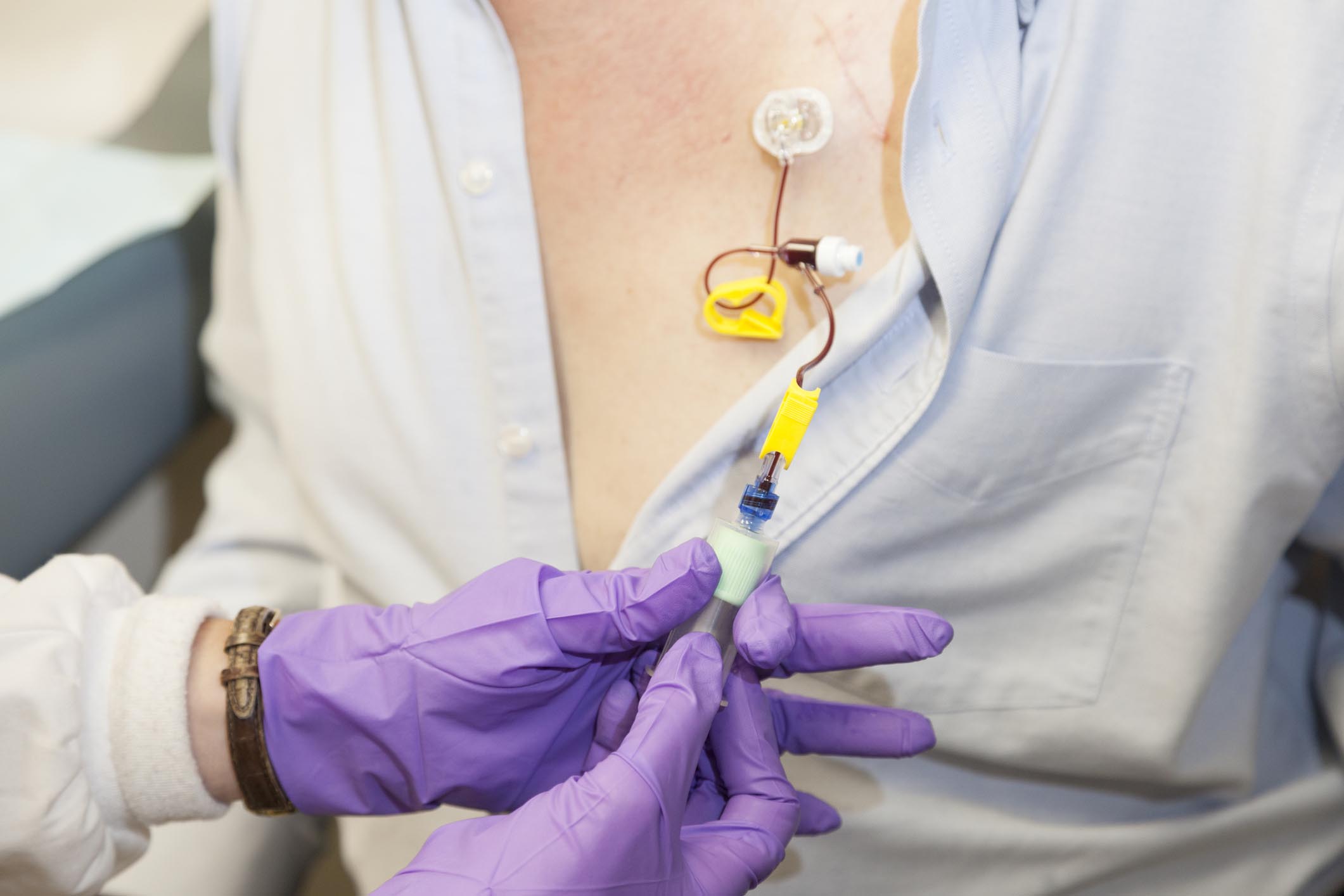
bora e perhershme dhe akullnajat
. BD-23560. PowerPort™ Implantable Port.. What Is a Chemo Port? - Cleveland Clinic. A chemotherapy port, or chemo port, is a small, implantable device portocath. It delivers chemotherapy drugs directly to your bloodstream through a vein in your chest, arm or abdomen portocath. Healthcare providers can also use your port to draw blood and give you fluids. Having a chemo port can greatly reduce the number of needle sticks required at your oncology .. Implanted Ports: What It Is and Why You May Need One for Chemo - WebMD. Doctors use them to take blood or to get drugs or fluids into your bloodstream more easily than with a standard intravenous needle, or IV. The port is a good option if you need treatments .. PICC Vs Port: Whats The Difference? - LifeWorks Wellness Center. A port (or port-a-cath) is surgically implanted into a patients large vein located in the chest and directly underneath the skin. Similar to a PICC, a port is used to administer frequent intravenous treatments, nutrition, fluids, chemotherapy, blood transfusions, and/or antibiotics. The device is attached to a small catheter that is threaded .. Instructions After Your Procedure to Remove Your Implanted Port or .. Instructions for Showering portocath. Dont shower for 24 hours (1 day) after your procedure. Keep your bandage clean and dry. After 24 hours, you can remove your bandage and shower.. Types of central venous catheters (CVC) - The Scrub Nurse portocath. Permcath, Vascath, Portacath, Hickmann line, PICC line - what are the differences? Permcath® and Hickmann® line are Tunnelled catheters. Vascath® is a Non-tunnelled catheter Portacath® is aTotally implatable catheter PICC line is a Peripherally inserted catheter Before we tie a knot in our brain trying to understand all these different lines, lets start by defining the group to which . portocath. Implantable port | Radiology Reference Article | Radiopaedia.org. Implantable ports, also known as chemoports , totally implantable central venous access ports or Port-A-Caths, are a type of central venous catheter for patients requiring long-term venous access. They offer the ability to have long-term central venous access with some of the advantages over peripherally inserted central catheters (PICC).. Port-a-Caths and PICC Lines for Chemotherapy - GoodRx portocath. This means that central IVs can stay in for a longer period of time, which is better for chemotherapy. The two main central IV options for chemotherapy are: Peripherally inserted central catheter (PICC), also known as a PICC line. Implanted port, also known as an implanted venous access device, totally implantable venous access port system .. Complicated Surgical Removal of an Adherent Port-a-Cath After 11 Years .. Port removal involves an incision overlying the port reservoir, dissection to the port catheter and reservoir, and gentle traction to remove the catheter, followed by closure of the venous insertion site, tunnel, and wound [ 2 ]. While difficulty removing port catheters is uncommon, a long port dwell time (>20 months) has been associated with . portocath. Dont Use That Port: Insert a PICC | PSNet. A woman was emergently admitted for surgery for acute appendicitis portocath. Although the patient had a chest port for breast cancer chemotherapy, the surgeon demanded that a peripherally inserted central catheter (PICC) be placed. The patient developed blood clots from the PICC, and surgery was cancelled. Significant complications, including perforation, peritonitis, and prolonged hospitalization .
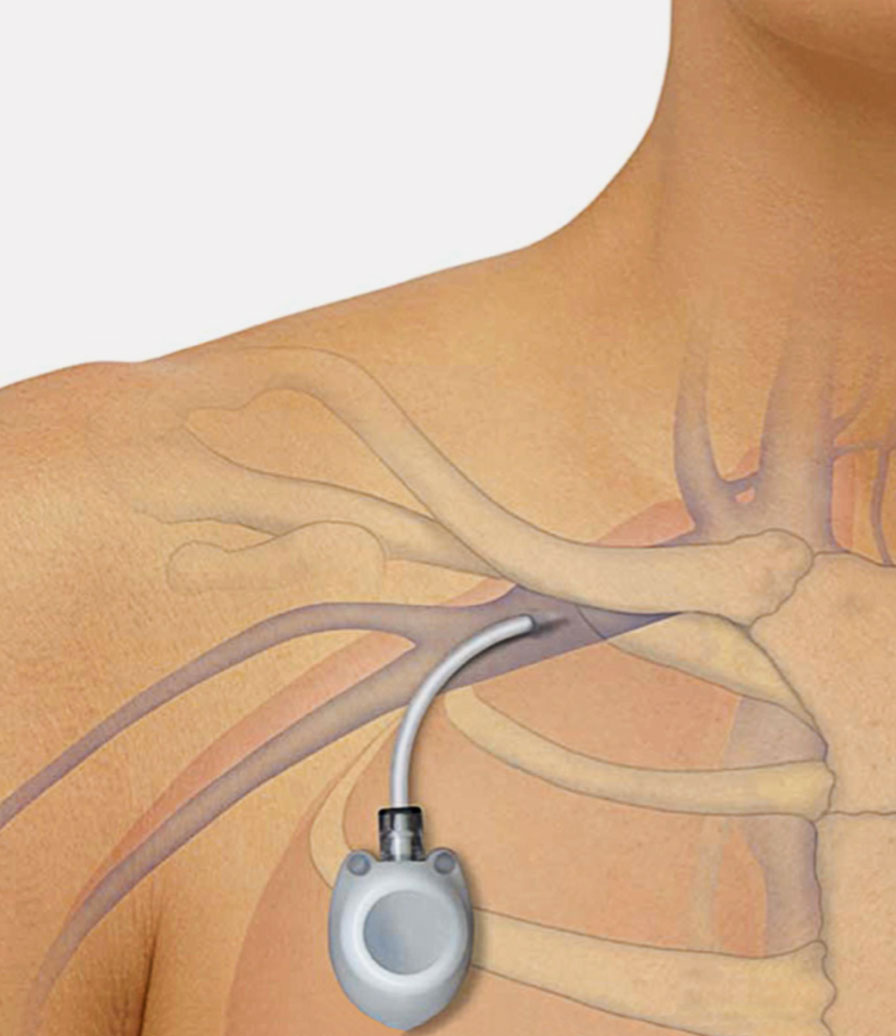

top 10 des présidents les plus protégés en afrique
. Técnica de Punción Port a Cath® - Enfermería Creativa. Apósito estéril transparente y gasas estériles. TÉCNICA DE PUNCIÓN DEL RESERVORIO SUBCUTÁNEO O PORT-A-CATH®: Informar y preparar al paciente y lavado de manos. Desinfectar la zona con antiséptico (Clorhexidina alcohólica). Con la mano dominante, localizar e inmovilizar la cámara del reservorio y sujetarla entre el dedo índice y el .. Port Placement Procedure Steps | BackTable VI
εξίσωση ευθείας που διέρχεται από 2 σημεία
. Close Pocket. • Confirm final position with fluoroscopy. • Confirm function/patency with aspiration of blood followed by flushing with normal saline; use Huber needle portocath. • Lock with 5 mL heparin 100 U/mL
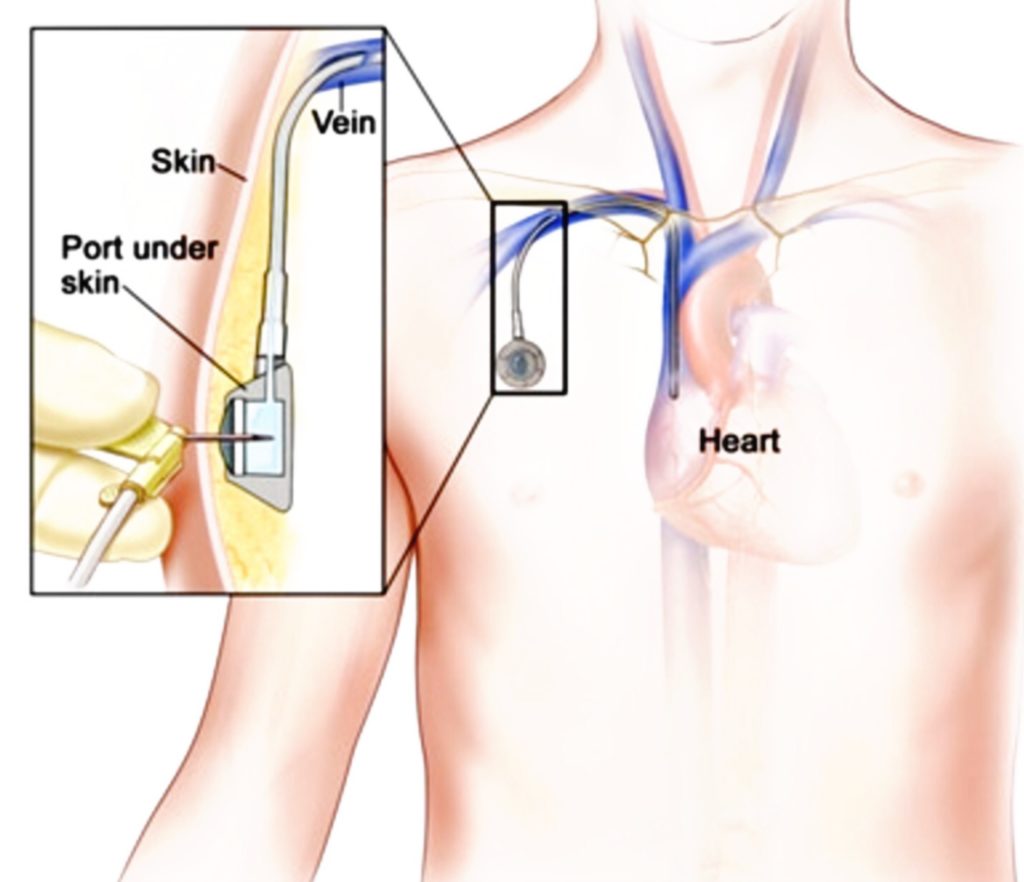
γιατι τριζει το κρεβατι
. Methods We performed a retrospective cohort study, including 568 patients who underwent port-a-cath . portocath. Everything You Need to Know About Chemo Ports - Verywell Health. A chemotherapy port (also known as a chemo port) is a small device placed under the skin that is attached to a vein in the chest to deliver chemotherapy drugs to the body. Without a port, a new intravenous (IV) needle would need to be placed each and every time you have chemo. A chemo port differs from a peripherally inserted central catheter .. Advances and directions in chemotherapy using implantable port systems .. History of locoregional cancer therapy. The first clinical application of cytotoxic chemotherapy for malignancies can be traced back to the 1940s, with the introduction of nitrogen mustard [].At that time, the limiting factor in the use of mustard compounds was their toxic effect on normal tissues.. PATIENT & CAREGIVER EDUCATION About Your Implanted Port. A surgeon or interventional radiologist (also called an IR doctor) will place your port. An IR doctor is a doctor who is a specialist in image-guided portocath. Management Strategies for Totally Implantable Venous Access Devices Not .. The specific timing for PAC removal varies according to indications and treatment duration and is not well established. However, it is generally considered that PACs that are no longer in use should be removed as prolonged indwelling periods can result in fibrosis and adhesion of the catheters to the central venous system and may make them difficult to remove with manual traction. 1,2
xgeovip
. Comparison: Implanted Catheter vs portocath. Central Venous Catheter (Port vs .. A surgically placed line put into a vein in your childs chest. (1) Inside the body: the catheter leads to vein above the heart (2) Dacron® cuff: Prevents the catheter from being pulled out and keeps bacteria out. The skin grows around the cuff. (3) Outside of the body: This part may have one or two smaller tubes (called lumens). Each lumen has a removable cap and a plastic clamp.
55 év felettiek szocho kedvezménye
. Implantable Venous Access Port (CPT codes 36570, 36571 . - Codapedia. Code 36578 describes "replacement", catheter only, of central venous access device, with subcutaneous port or pump, central or peripheral insertion site. CPT codes 36576 and 36578 have a "Moderate sedation" icon before each code. This symbol is also noted on codes 36555, 36557, 36558, 36560-36568, 36570, 36571.. Subcutaneous Port for Pediatric Cancer Patients - St portocath
gigi geraham pecah
. Jude together
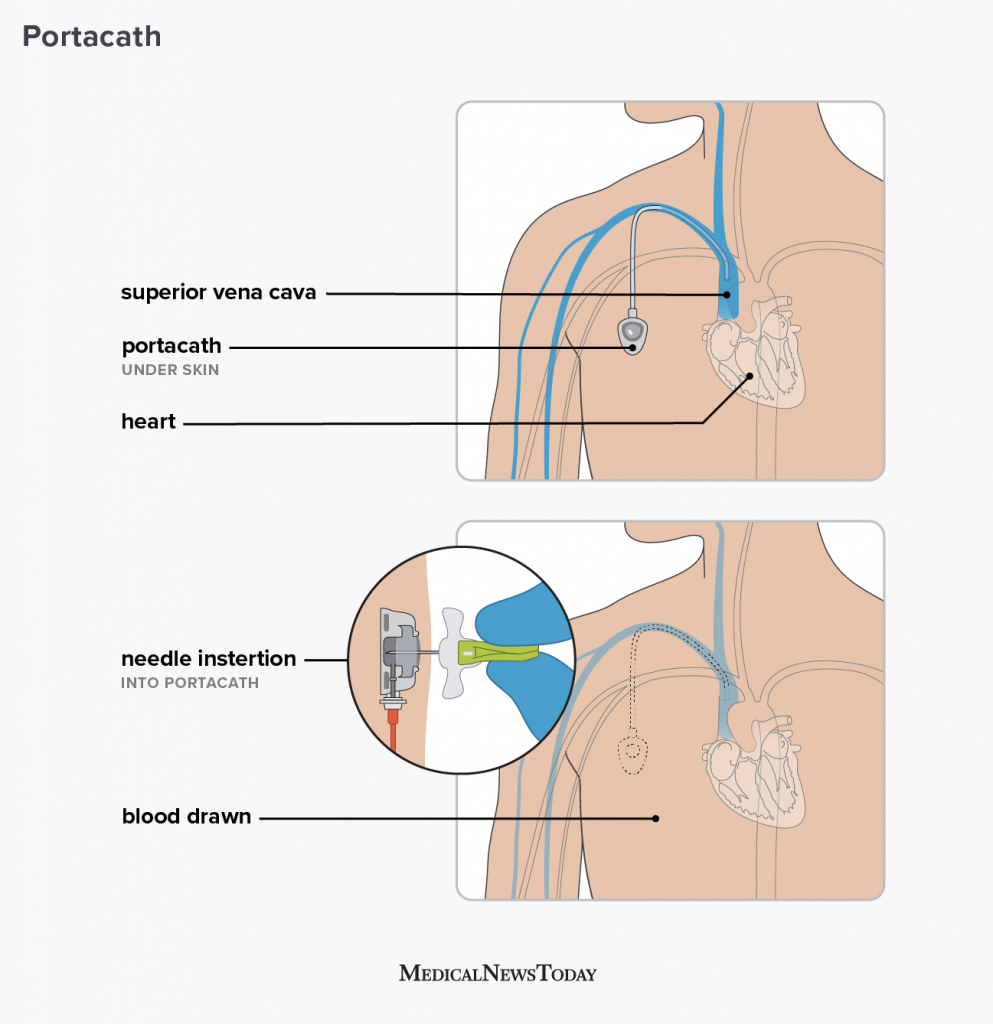
. It is used to inject liquids directly into your vein as part of. How a Portacath is used for Chemotherapy Treatment - YouTube. Oncologist Dr. Stephen Lemon from Oncology Associates in Omaha, Nebraska explains how a port-a-cath is used for cancer treatment during chemotherapy. Visit h.. What is a chemo port? | MD Anderson Cancer Center. What is a chemo port? A port is a device placed under the skin which connects to one of your major veins. It looks like a disc around the size of a quarter, with a flexible tube attached. Ports can be made of metal or plastic. portocath. Portacath (Totally implantable venous access device/ TIVAD). bump where the portacath is portocath. How a portacath looks in place Accessed portacath with dressing Portacath (Totally implantable venous access device/ TIVAD) A portacath is a central venous access device. It is used to give treatments and blood transfusions into your bloodstream and to take blood samples. A portacath is used instead.